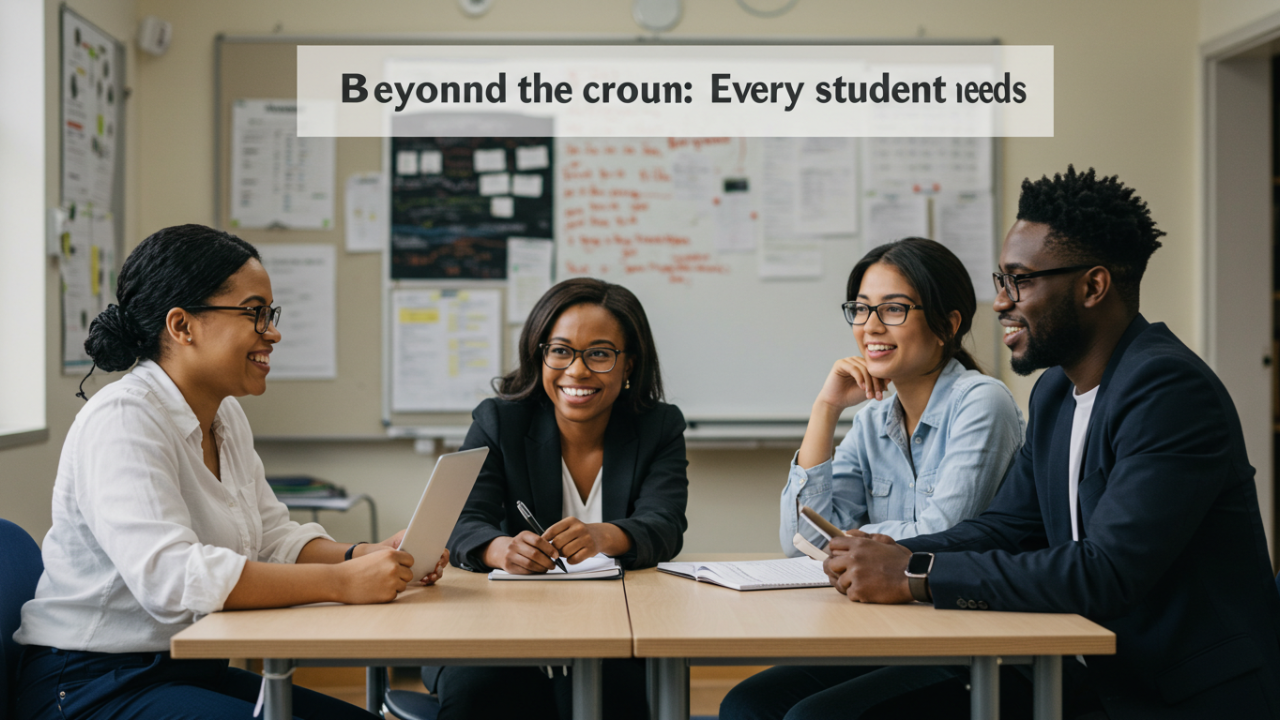Education is often seen as the gateway to success, but traditional classrooms sometimes fall short in preparing students for the complexities of life beyond school. While mastering algebra or memorizing historical dates has value, the real world demands a broader skill set—abilities that enable individuals to navigate careers, relationships, and personal growth with confidence and adaptability. This article explores the essential real-world skills every student needs, offering practical insights, actionable strategies, and answers to common questions for educators, parents, and learners. By bridging the gap between academic learning and practical application, we can empower students to thrive in a dynamic, ever-changing world.
The Need for Real-World Skills
Why Classroom Learning Isn’t Enough
Traditional education excels at delivering content knowledge but often overlooks skills like financial literacy, emotional intelligence, or critical thinking in ambiguous situations. For instance, a student may ace calculus but struggle to budget their first paycheck. The modern workforce values adaptability, collaboration, and problem-solving—skills rarely emphasized in standardized curricula.
Research highlights this disconnect: a 2023 survey by the National Association of Colleges and Employers found that employers prioritize communication, teamwork, and critical thinking over technical knowledge. To address this, education must extend beyond rote learning, equipping students with tools to handle real-life challenges.

Defining Real-World Skills
Real-world skills are practical, transferable abilities that apply across contexts—work, personal life, and civic engagement. They include critical thinking, communication, financial literacy, emotional intelligence, time management, and digital fluency. These skills empower students to make informed decisions, build relationships, and adapt to change, ensuring success beyond academic achievements.
Core Real-World Skills for Students
Critical Thinking and Problem-Solving
Critical thinking—the ability to analyze, question, and solve problems—is foundational for navigating life’s uncertainties. Whether deciding on a career path or evaluating online information, students need to discern fact from opinion and think creatively.
Actionable Strategies:
- Classroom: Use case studies or ethical dilemmas (e.g., debating environmental policies) to practice weighing evidence and outcomes. Assign open-ended projects, like designing a community initiative, to encourage creative solutions.
- At Home: Parents can play strategy games like chess or discuss news articles, asking, “What’s another perspective?” to sharpen analytical skills.
- Insight: Studies show critical thinking boosts academic performance by 15-20% and correlates with better decision-making in adulthood.
Effective Communication
Clear communication—both verbal and written—is crucial for collaboration, job interviews, and advocacy. Yet, many students struggle to articulate ideas or listen actively.
Practical Tips:
- Educators: Incorporate debates or storytelling workshops. Use peer reviews to teach constructive feedback, emphasizing clarity and tone.
- Students: Practice summarizing complex ideas in 2-3 sentences, like explaining a science concept to a younger sibling.
- Parents: Encourage family discussions where everyone shares one idea and responds to others, fostering active listening.
- Insight: Communication skills increase employability by 30%, per LinkedIn data, and reduce workplace misunderstandings.
Financial Literacy
Understanding money management—budgeting, saving, investing, and avoiding debt—is vital for independence. Many young adults face financial stress due to a lack of early education in this area.
Detailed Approach:
- Classroom Activity: Simulate real-world scenarios, like creating a budget for a hypothetical first job. Use apps like Mint for virtual practice.
- Parental Guidance: Give teens a small allowance to manage, discussing trade-offs (e.g., saving for a goal vs. impulse buys).
- Resource: Free online tools like Khan Academy’s financial literacy courses offer interactive lessons.
- Insight: A 2024 study found that financially literate teens are 40% less likely to accrue debt in their 20s.
Emotional Intelligence (EQ)
EQ—the ability to understand and manage emotions—enhances relationships and resilience. Students with high EQ handle stress, resolve conflicts, and collaborate effectively.
Implementation Steps:
- Schools: Integrate role-playing exercises, like resolving a group conflict, to practice empathy and self-regulation.
- At Home: Model emotional awareness by discussing feelings during challenges, e.g., “I’m frustrated because… How do you feel?”
- Tip: Use journaling prompts like “What made me proud today?” to build self-awareness.
- Insight: Research indicates high EQ correlates with better mental health and leadership success.
Time Management and Organization
Balancing school, work, and personal life requires prioritizing tasks and setting goals. Poor time management leads to stress and missed opportunities.
Actionable Advice:
- Educators: Teach students to use planners or apps like Todoist, setting short-term (daily) and long-term (semester) goals.
- Students: Try the Pomodoro technique—25 minutes of focused work, 5-minute breaks—to boost productivity.
- Parents: Help kids create visual schedules, rewarding consistency to build habits.
- Insight: Effective time management improves academic performance by 25%, per educational studies, and reduces procrastination.
Digital Fluency and Ethical Technology Use
In a tech-driven world, students must navigate digital tools and understand their ethical implications—privacy, misinformation, and digital footprints.
Practical Steps:
- Classroom: Teach source evaluation by comparing credible vs. biased websites. Assign projects using tools like Canva for creative output.
- Students: Learn basic coding via Scratch to understand tech’s inner workings, fostering confidence.
- Parents: Discuss social media’s impact, setting boundaries like “no phones at dinner” to encourage mindful use.
- Insight: Digital fluency is a top skill demanded by 80% of employers, per a 2025 tech skills report.
Integrating Real-World Skills into Education
Project-Based Learning (PBL)
PBL connects academics to real-world applications. For example, a science class might design a sustainable city model, blending environmental knowledge with teamwork and planning.
Step-by-Step Guide:
- Identify Goals: Align projects with standards (e.g., math skills in budgeting).
- Design Tasks: Create scenarios like running a mock business, requiring research and presentation.
- Provide Scaffolds: Offer templates or checkpoints to guide students.
- Assess Holistically: Evaluate process (collaboration, effort) and product (final output).
Tip: Start small with one project per semester, scaling as confidence grows.
Community Partnerships
Engage local businesses or organizations to provide real-world context. Guest speakers, internships, or mentorships expose students to practical applications.
Implementation:
- Schools: Partner with local banks for financial literacy workshops or tech firms for coding bootcamps.
- Parents: Connect kids with community volunteers for shadowing opportunities.
- Insight: Students with real-world exposure are 50% more likely to feel prepared for careers, per a 2024 education survey.
Integrating Skills into Existing Curricula
Embed skills in daily lessons without overhauling systems. For instance, a history class can teach communication through oral presentations or emotional intelligence via group discussions on historical conflicts.
Actionable Example:
- Math: Use budgeting exercises to teach percentages.
- English: Write persuasive letters to practice communication and critical thinking.
- Science: Debate ethical issues like genetic engineering to build EQ and reasoning.
Overcoming Barriers to Teaching Real-World Skills
Time and Curriculum Constraints
Teachers often face packed schedules, but micro-lessons (10-15 minutes) can introduce skills. For example, start class with a quick time management tip or a critical thinking prompt.
Strategy: Advocate for professional development to help teachers integrate skills efficiently. Use free resources like Edutopia for lesson plans.
Lack of Teacher Training
Not all educators feel equipped to teach soft skills. Schools can offer workshops on PBL or emotional intelligence, while teachers can join online communities for peer support.
Tip: Start with one skill per term, collaborating with colleagues to share best practices.
Engaging Reluctant Students
Some students resist non-traditional lessons, preferring familiar routines. Build trust by explaining benefits and offering choices within tasks.
Approach: Use gamification—points for teamwork or creative solutions—to spark interest. Reflect post-activity to show progress.
The Long-Term Impact
Equipping students with real-world skills fosters resilient, adaptable adults who contribute to society. They’re better prepared for diverse careers, from entrepreneurship to public service, and can handle personal challenges like financial stress or workplace conflicts. Societally, these skills reduce inequality by empowering all learners, regardless of background, to succeed.
In conclusion, moving beyond the classroom to teach real-world skills is not just an enhancement—it’s a necessity. By prioritizing critical thinking, communication, financial literacy, emotional intelligence, time management, and digital fluency, we prepare students for a fulfilling life. Start today: pick one skill, try one strategy, and watch the transformation unfold.
FAQ
Why aren’t real-world skills taught more in schools?
Time constraints, standardized testing, and rigid curricula often prioritize academic content. Advocate for pilot programs or extracurriculars to integrate these skills gradually.
How can parents teach these skills at home?
Incorporate skills into daily routines—budgeting allowances for financial literacy, discussing emotions during conflicts for EQ, or setting schedules for time management.
Are these skills relevant for all career paths?
Yes, they’re universal. Critical thinking aids engineers; communication helps nurses; financial literacy benefits freelancers. They’re foundational for any role.
What if my school lacks resources for real-world learning?
Use free tools (e.g., online financial simulators) or community partnerships. Low-cost activities like debates or journaling also work.
How do I know if my child is developing these skills?
Observe behaviors: Are they solving problems independently? Communicating clearly? Use checklists or journals to track progress and discuss strengths.



